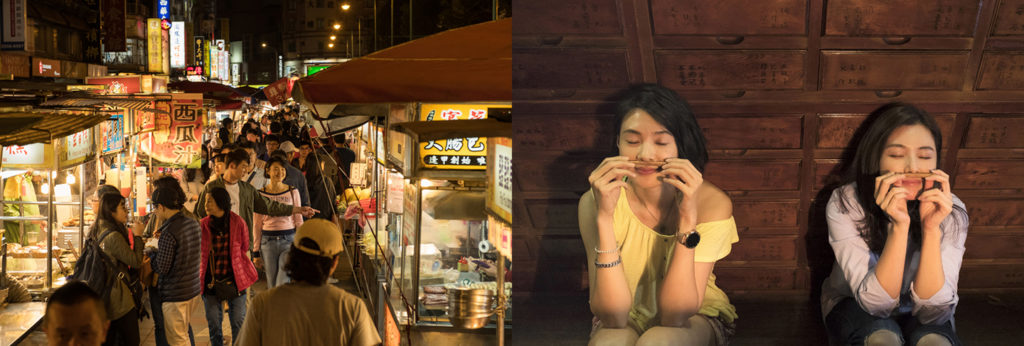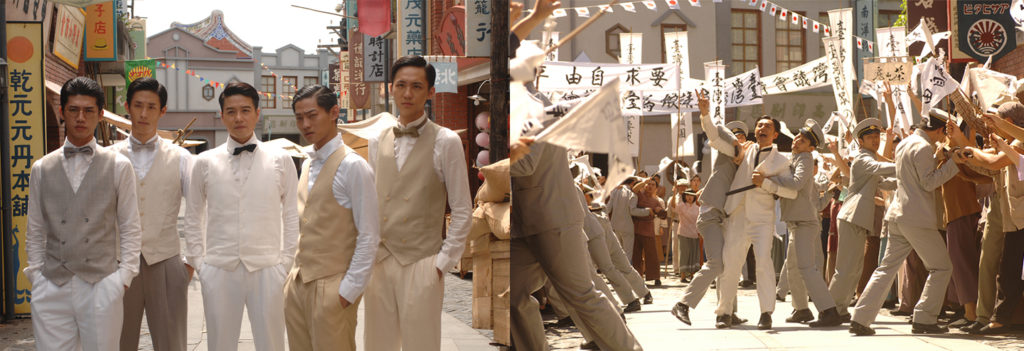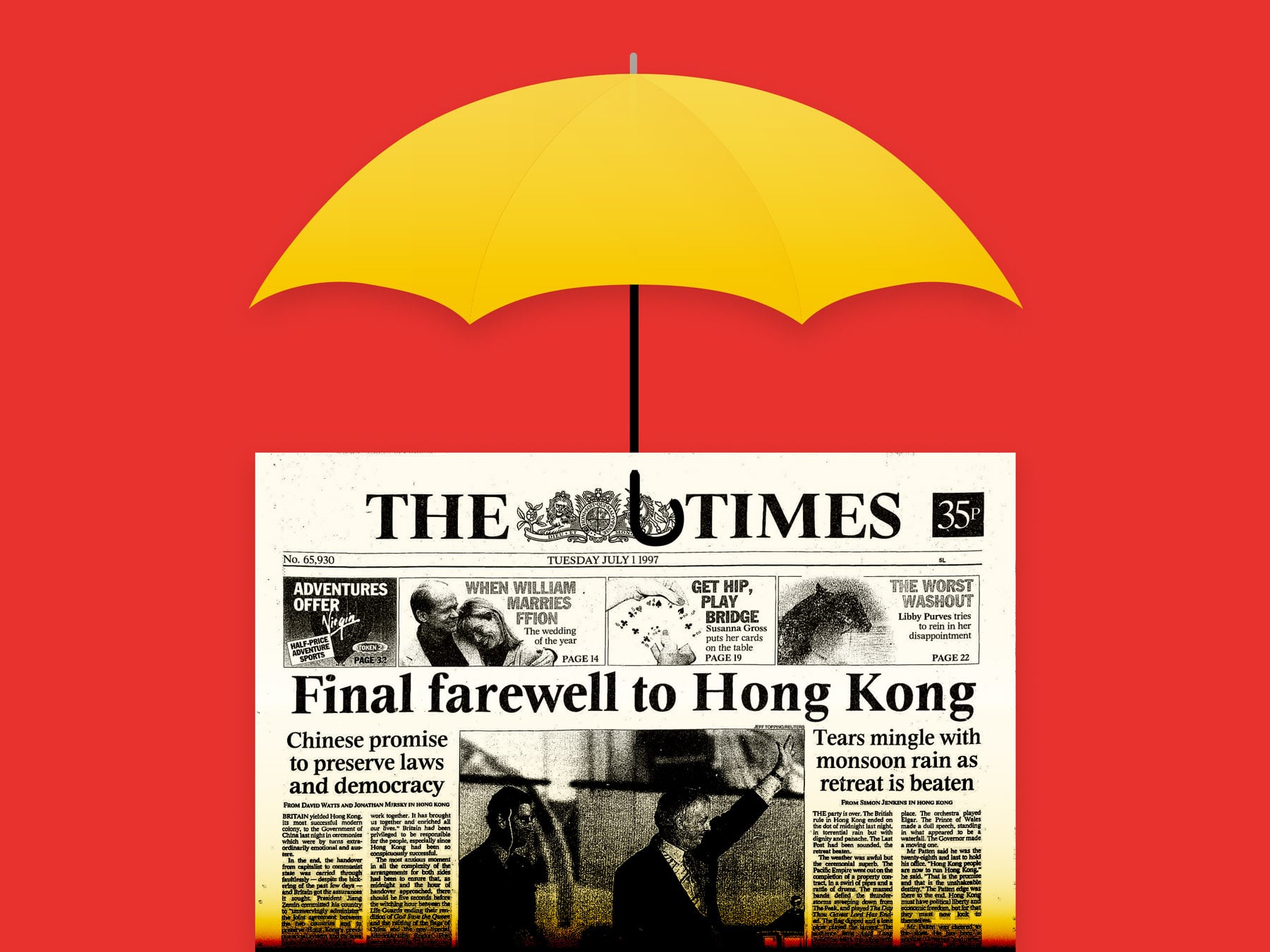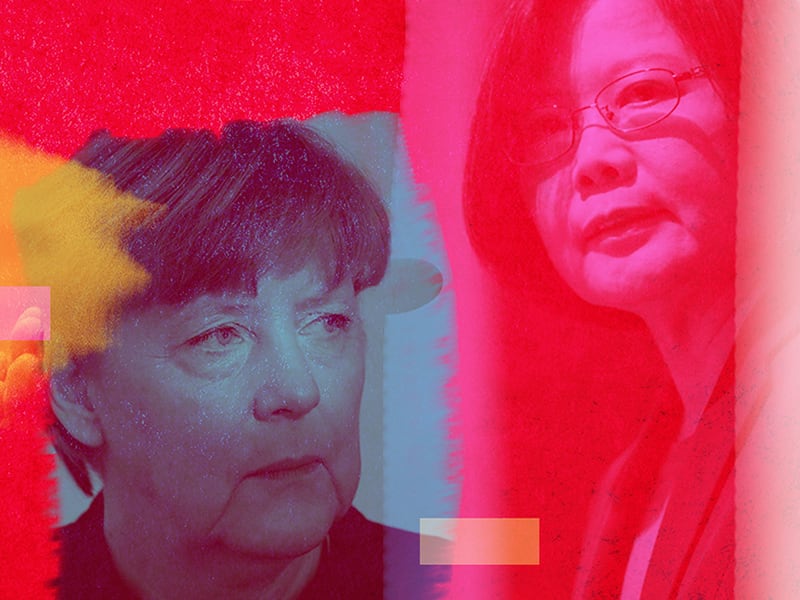
“Financing, Resources, and a Bigger System”: Shooting with American Crews, Selling the House, and the Future of Taiwanese Filmmaking
Talking with filmmakers Nelson and Gisele Yeh about production lockdowns, Netflix partnerships, and the flourishing film industry in Taiwan.
Gabriel Kuo September 30 2021
Sibling filmmaking duo Nelson and Gisele Yeh’s feature Night Market Hero topped the domestic box office in 2011, drawing praise from critics and putting them at the forefront of Taiwan cinema. Over the past decade, they have been producing and creating features and numerous television serials. Their 2018 series with Netflix, A Taiwanese Tale of Two Cities, drew them closer to a global audience and pushed Taiwan further towards recognition. Now, as they set out on their next production, a host of new challenges and expectations await.
Hi Nelson and Gisele! I’m excited to talk with you guys a bit about filmmaking. But before we get into it, I’m curious how the pandemic has affected the film industry in Taiwan?
NELSON: There were not many positive cases in Taiwan last year, so not much changed. Our productions went pretty well. We just needed to follow the government’s protocol to have the entire crew wear masks at all times while shooting. Taiwan’s number system for COVID is 1 to 4, with Level 1 being normal with the lowest risk level, and Level 4 is a citywide shutdown. During all of 2020, Taiwan was at Level 1, the lowest. I went to concerts, ate in restaurants with friends — everything was normal.
GISELE: We were doing a TV production with HBO Asia called Adventure Of The Ring, and we needed some pick-up shots. They were very worried about our shoot, because the COVID situation around the globe was really serious, while in Taiwan, we’d had zero local cases for weeks. Last year was all fine. But the beginning of this May, we started to have one or two hundred local cases a day, which is quite high if you consider how small Taipei’s population is. We were about to begin production on our new film, and a week before our shoot date, we suddenly had twenty local cases in a day. We immediately stopped training classes and rehearsals for talent, and postponed meetings. We thought the suspension would only be about two weeks. Then around May 15th, the government announced that Taiwan moved up to Level 3 alert, so then we had to shut down our production. We were very happy with our decision, because we took it seriously beforehand. Our line-producer was working with another crew and one of their extras tested positive, so it was very scary to us, since it could have easily spread to our crew. We knew that in Hollywood, they were starting to build their own bubbles on each production, so we learned a little from that.
Several of your films and TV series focus around Taiwan in the 1920s (La Grande Chaumière Violette, Twa Tiu Tiann), an era when Taiwan was still under Japanese occupation. It was also a period of rapid growth and industrialization for Taiwan. Can you talk a bit as to why this period is significant for you guys to include in your projects? And why it is significant for Taiwan in general?
NELSON: Our first period movie was March of Happiness, which was produced by our parents. It was selected to be included in the Cannes Film Festival in 1999. I was around 24 around that time. I was doing all this research for the movie, and I realized that I really had no clue of our own country’s history. When the February 28th incident happened, my father was just 8 years old. This was a part of history that they didn’t teach us in school, so I had no idea what the 228 Incident was. In 2013, I made Twa Tiu Tiann. I wanted to include a certain painting in the story — a painting that I’ve always seen around everywhere in Taiwan, but never knowing the history behind it. I started doing more research and learned about the artist Kuo Hsueh-Hu (郭雪湖), his painting “Festival On South Street”, and its place in Taiwan art history. At that time, many artists and activists were living in a district called Dadaocheng (大稻埕) in Taipei. We later we made a TV series called La Grande Chaumiere Violette, where the painting was featured as part of the show’s story that is set in that district in the 1920s.

This period in Taiwan history is a part of our life, and it’s important to us. Dadaocheng is also our parents’ hometown. But more than that, if it weren’t for these artists and activists, we wouldn’t be the creatives we are today. It’s very important for us to pass on these stories to future generations.
GISELE: I think it’s about a specific time and place and how Taiwan becomes Taiwan today. Diversity was a new thing in that era, and it’s shown in that painting, where everyone is wearing something different — some are wearing suits, some are wearing kimonos, some are more casual. There’s several cultures being represented, whether it’s from the West, or China, or Japan. After the Japanese occupation, what the KMT brought from China to Taiwan were mostly restrictions, like you couldn’t even speak Taiwanese anymore. They didn’t bring in any art or culture, so there wasn’t any attention given to the creative community. Even though we were colonized by the Japanese with their occupation and government, Japan brought us into the modern age with systems and construction and diversity. Our grandmother was married to a Japanese businessman during this period, so this period of Taiwan history is especially important and dear to us.
NELSON: Before the Japan occupation, Taiwan was ruled under the Qing dynasty, where things like foot binding were common. When the Japanese came in, they started building up Taiwan, with water irrigation systems for tap water, and the railways across the country. The culture changed. And even though Taiwanese people were still regarded as second-class citizens at the time, what the Qing dynasty did before the Japanese occupation, and what the KMT did after — both were far worse!
With A Taiwanese Tale of Two Cities, you guys partnered with Netflix. Tell me how that materialized.
GISELE: We felt like it was time for us to challenge ourselves!
NELSON: When I discovered Netflix for the first time, I was blown away by this new system of movie and TV programming. As I started using it more, I felt that the content and business model of their programming would start to change the industry, and so I really wanted to work with them. A friend of mine had a meeting set up with some of their people, and I asked if we could join them — we just wanted to introduce ourselves and exchange business cards.
GISELE: The original people we met with were just the internal business relations team of Netflix US/Europe, not execs or content producers. We showed them our show reel, they were amazed by how much diversity we had in our work. In one of our trailers that we showed them, we had characters speaking in English, Mandarin Chinese, and Japanese. And that was kind of what they were looking for. They were expanding at that time, and they were trying out new things, looking for something fresh. For them, Narcos was doing really great for them, and they were proud of that title’s diversity — produced by a French television production company, with a Brazilian director, working on a Colombian story, released by an American studio. They didn’t want to be limited to one culture or one language. In the end, they handed us to their content team and then we started working together.

Talk a little bit about the process of working with a studio like Netflix versus how you would traditionally do a production.
NELSON: I think the different part about working with them was that they asked us to do exactly we wanted. Not to think about what they might want. They were really just interested in our original stories. I was astonished by this idea.
GISELE: They are much more technical than we usually are in Taiwan with our productions. They have a quality control system and a set of guidelines that we never had to deal with in Taiwan. In Taiwan, we have our quality control as well but theirs is on a completely different level, like their post-production audio mastering and things like that. They didn’t ask us to use a specific camera — they wanted us to use cameras that we felt would be the most suitable. They had thick handbooks for every camera, to fit their quality standard.
NELSON: We were the first production company to work with Netflix in Taiwan, so we had no one to ask or get advice from when we started. Technically, we learned a lot. The funny thing is, the theme of A Taiwanese Tale of Two Cities is culture shock. But for us in real life, during production, that was the culture shock, since we were shooting in the U.S. I remember on our first day of shooting in California, in Napa, we started at 5am. And I saw the breakfast they had out — it was only hot coffee and donuts. Normally, in Taiwan, we would have a huge spread for breakfast if we have to start working at 5 am. That was an awkward moment with our crew, to tell them that there really wasn’t any breakfast!
GISELE: And also the working habits are quite different. We don’t feel that we are subpar to any American crews — they just have more financing, resources, and a bigger system. But the American crew we worked with were surprised to see our Taiwanese crew running around on set with everyone doing double or triple coverage. To them, they don’t run, and they only do what’s within their job requirement. And also in Taiwan, there are a lot more women in the crew. On the American crew, there was only one female member.

Is Taiwan currently doing anything to progress its own cinema industry, or will Taiwanese filmmakers need to rely on more universal platforms like Netflix in order for their work to be shown?
NELSON: Last year was interesting because there were no new Hollywood films shown in Taiwan, since American productions were all postponed. But the theaters in Taiwan were still open until this May when Taiwan went into Level 3 alert, and so last year the domestic Taiwanese films did very well in theaters, because we had no other foreign films to watch or compete with. It was only Taiwanese films. And international platforms like HBO and Netflix have also been putting lots of financing into developing local productions, so lately we have many Taiwanese films and shows on different international platforms. And these platforms have elevated Taiwan’s film industry and its quality level, with bigger budgets and bigger markets. Before the platforms, we relied a lot on the Ministry of Culture and their funding, so projects were quite limited in budget and scale.
I know that sometimes you guys have grant assistance from the Ministry Of Culture in Taiwan for some of your projects. Can you talk a little about that process? I imagine that part of their goal is to help finance projects that showcase Taiwan’s culture and history. How aligned are you guys with some of their needs?
GISELE: We still rely a lot on MOC’s subsidies, because they can still invest quite a bit to your budget. And many local productions and platforms are now also working with international platforms. In Taiwan, we have a company called CatchPlay, which started as a video on-demand and streaming service. But they also invest in foreign and American productions like The Revenant, Martin Scorsese’s Silence, and Disney productions. They then handle the distribution of these foreign films into Taiwan. They know the necessity of working globally — a region like Singapore is small and limited by itself, so they had to work with international business. It’s all joint funding, funding from South Korea, Japan, and other regions, because these shows will also be distributed and shown there. And so I think now, for Taiwan and people in the film industry here, and even the government, they all know we have to collaborate with these global companies and platforms. And they also know that this will help Taiwan’s creative leverage and show our content to the rest of the world.
NELSON: Traditionally, if you couldn’t get a grant from the MOC, financing would come mostly from family and friends. For our first feature, we had to sell our house and get a loan — we didn’t know a better way to gather funds. But things are different now, and we know how to do better with finding financing.
GISELE: Recently there is another state-funded association called TAICA (Taiwan Creative Content Agency). It’s actually funded by the MOC. Where the MOC has to play it safe, since they’re the government, TAICA can help much more, since they have actual film industry people working for them, so it’s a good start.
NELSON: They have a vision. They know that the entertainment industry, with film, TV series, comics, novels — these things are all very important to a country and its identity. They understand that something like K-Pop can define South Korea to a global audience.
Much of the success of Taiwan’s New Wave era in the 80s and 90s was a response to rapid urban growth and issues of identity in a new, modern Taiwan. Looking back, what are your thoughts now on the New Wave era?
NELSON: That was of course a very important period of Taiwanese film history. But I think the movies from the New Wave are not as important to the new generation as they were to my generation. This new generation of filmmakers have more international vision than we used to have, because of the internet. They have access to European films, Indian, Chinese, Korean films, and that’s to their advantage.

GISELE: Also the new generation has less of a problem of self-identification, which is a big theme of the New Wave films. When we were in middle school, we were taught that we were Chinese. Today, in school, you are taught that you are Taiwanese. The films of the New Wave era dealt a lot with this issue of displacement and identity at the time. In the 80s, a film like A City Of Sadness dealt with the political context of identity, due to the KMT’s authoritarianism on the Taiwanese. But now, in this moment, most young Taiwanese will say “I am Taiwanese, and China is just different from us”.
NELSON: But we also have been losing a lot of talent to China. China’s market is so large, and everyone wants a piece of that market. And China pays better than Taiwan, so many younger Taiwanese filmmakers decide to earn their pay in China, which is a shame.
Given what we are now seeing with platform distribution and streaming culture, what do you think the future of Taiwan cinema will look like?
GISELE: Now, many people will ask us if we would like to change our movie into a TV series, or launch them on Over-the-Top (OTT) platforms because they are the trend now. And last year, Taiwan’s top box office movies are mostly in Taiwanese (Hokkien). I think it’s very interesting to look into and to take consideration into our future works.
NELSON: The internet influencers and online filmmakers are also the future. Maybe their videos or films won’t be shot with such great production value but there will be all different kinds of videos. Some ideas are good for long form, and some ideas are good for short form. It doesn’t have to always be in 90-minute feature film format — we know now you can capture an audience with a 2 or 3 minute short clip or less. The possibilities with new technology and the diversity of stories are the future of filmmaking.
Gabriel Kuo is the founder and editor of Atmota.
Production stills courtesy of Green Film Productions.



